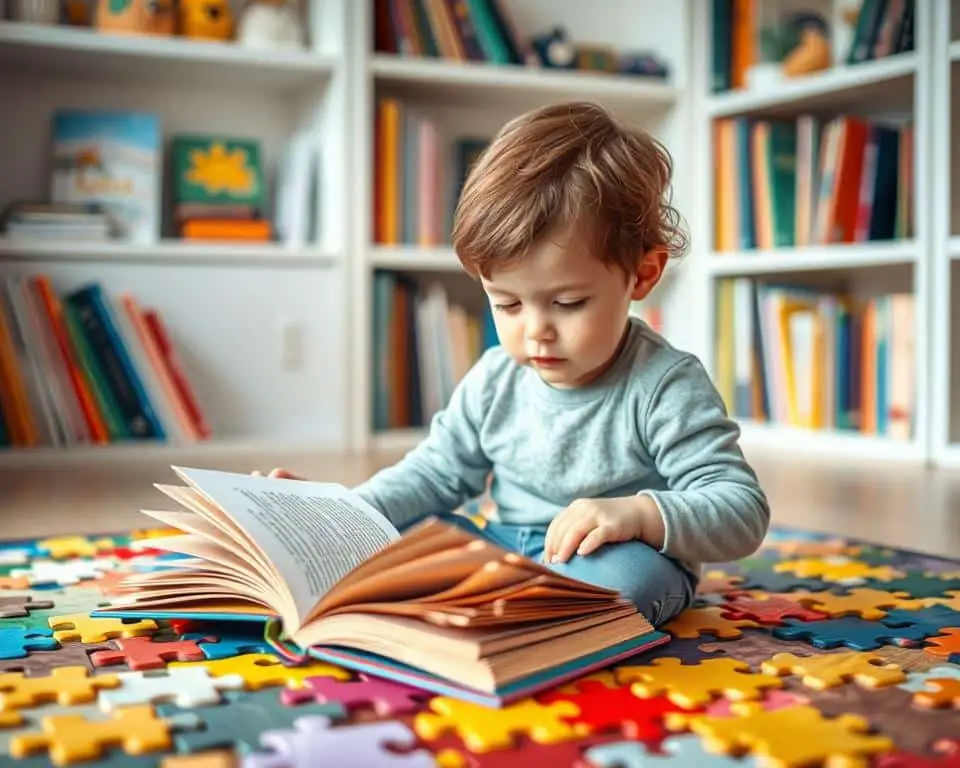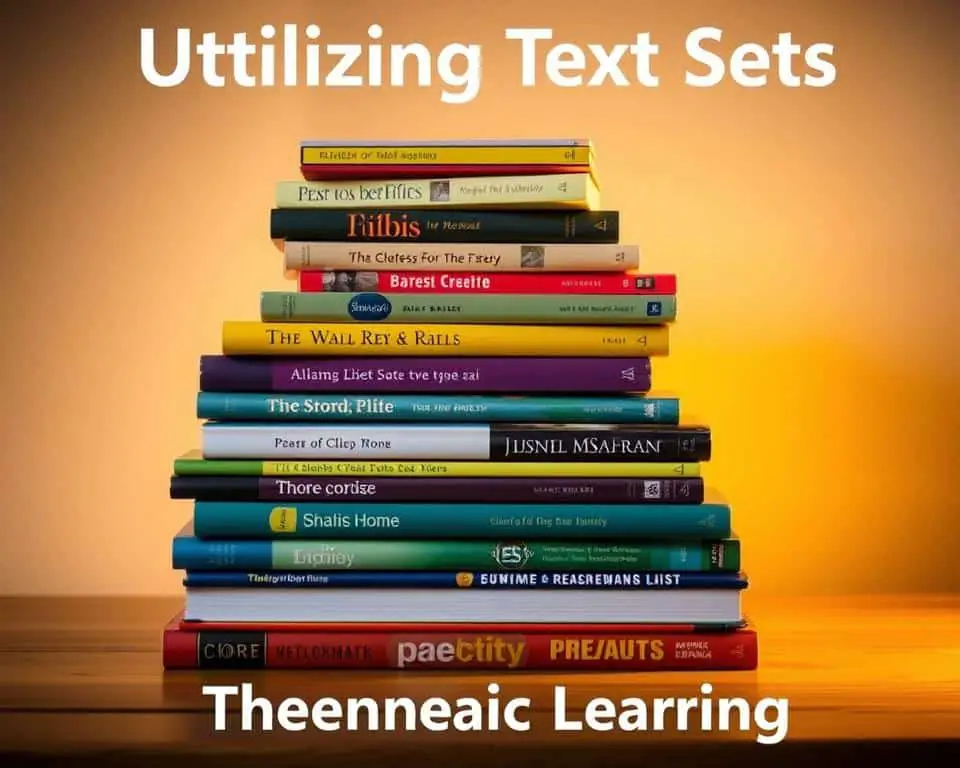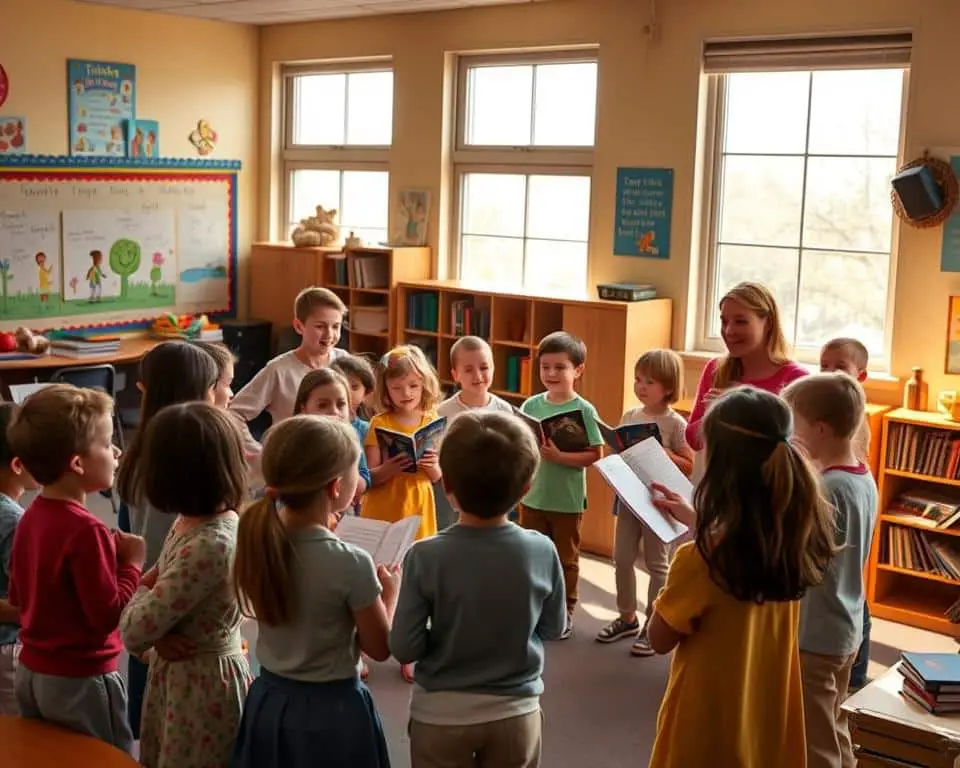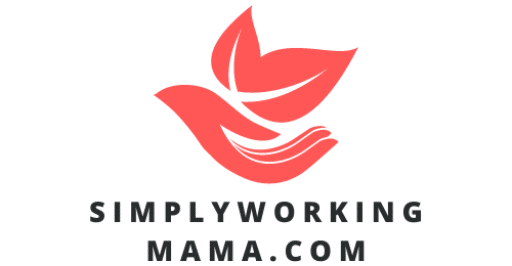Finding the right ways to make reading fun for kids is key. It helps them develop a love for reading. By using different activities, reading can become a fun and educational part of their lives.
Key Takeaways:
- Incorporate diverse reading motivation strategies to maintain children’s interest.
- Boost reading engagement through interactive and playful activities.
- Enhance literacy skills by integrating fun literacy activities for kids.
- Ensure reading sessions are enjoyable to foster a lifelong love of reading.
- Adapt activities to align with individual children’s interests and reading levels.
Think-Aloud Strategies
Think-aloud reading strategies are a great way to help kids improve their reading. By talking out loud while reading, parents and teachers show how to understand texts better. They teach how to decode words, question stories, and make connections. This makes reading more fun and easier to understand.
How to Implement Think-Alouds in Reading Sessions
Start by picking a book that fits the child’s reading level. As you read, stop to share your thoughts about the story. If you see a hard word, talk about how to guess it from the context.
Make guesses about what will happen next and ask questions that make the child think. This way, they learn to read better and enjoy it more.
Benefits of Think-Alouds for Young Readers
Think-aloud strategies are very helpful for kids. They show kids how good readers think and read. This helps kids understand stories better by asking questions and thinking deeply.
It also helps find out where kids might need extra help. This way, teachers can give more focused support to improve reading skills.
Dialogic Read-Alouds
Dialogic read-alouds are a fun way to get kids involved in reading. They make kids active in the story, helping them connect deeply with it. Caregivers and teachers use these techniques to make reading fun and educational for young ones.
What is Dialogic Reading?
Dialogic reading involves asking kids questions and talking about the story as you read. It turns reading into a lively conversation. This way, kids share their thoughts and learn more about the story.

Interactive Questions and Vocabulary Building
Asking open-ended questions is key in dialogic reading. Questions like “What do you think will happen next?” spark interesting talks. This method boosts understanding and helps kids learn new words.
By talking about new words, kids naturally learn more vocabulary. It makes learning fun and easy.
Using Visualizing Techniques
To bring stories to life, one great strategy is to help kids create mental images as they read. By enhancing mental imagery, young readers can dive into the story. They make every detail vivid and memorable. This way, they connect more deeply with the text.

Visualizing techniques boost a child’s understanding of what they read. By imagining scenes, characters, and events, kids grasp the material better. They also remember it longer. This active process makes reading more engaging and fun.
| Techniques | Benefits |
|---|---|
| Sketching Scenes | Improves comprehension skills by drawing connections to visual elements. |
| Mental Replays | Enhances mental imagery by replaying scenes to solidify understanding. |
| Group Discussions | Utilizes reading visualization strategies in a social setting to share insights and perspectives. |
By using these methods, reading sessions become more dynamic and fun. As kids practice visualizing, they grow to love stories and reading. They develop a deep appreciation for the written word, keeping their love for reading alive.
Jigsaw Reading Activities
Using the jigsaw reading method is a great way to make learning fun and interactive. Students work together, each reading a different part of a text. Then, they share what they learned with their group.

This approach makes sure everyone is involved and learning from each other. The discussions and sharing help students understand the material better. It also helps them develop important social skills.
With cooperative learning strategies like the jigsaw method, students dive deeper into the text. They feel proud to be the ‘expert’ on their part. This activity boosts teamwork and critical thinking skills.
Utilizing Text Sets for Thematic Learning
Exploring thematic text sets offers a rich way to read, bringing many benefits to young learners. By using diversified reading materials across different genres and levels, teachers can engage students in a meaningful way. This method not only makes reading more interesting but also boosts enhancing thematic learning.

Variety in Genres and Reading Levels
Thematic text sets are flexible and offer a wide range of diversified reading materials. From fiction to non-fiction, and from poetry to prose, there’s something for everyone. This variety ensures that every student finds something they enjoy and can handle, making learning more inclusive and effective.
Incorporating Supplementary Materials
To get the most out of thematic text sets, adding extra materials is key. Things like videos, podcasts, and interactive activities can make learning richer. They help students understand the topic better and make connections to real life. This approach supports different learning styles and enhances thematic learning.
| Type of Resource | Example Material | Purpose |
|---|---|---|
| Books | Fiction, Non-fiction | Diverse reading levels |
| Videos | Documentaries, Educational Clips | Visual learning |
| Podcasts | Educational Series | Auditory learning |
| Interactive Activities | Games, Quizzes | Engagement |
Engaging in Reader’s Theater
Reader’s Theater is a fun way for students to get into reading. It turns regular reading into a show, making it more exciting. Kids can dive into stories, improving how well they understand and enjoy them.

It’s not just fun; it’s also very educational. One big plus is improving reading fluency. By practicing their lines, students get better at reading smoothly. They learn to pay attention to how they sound, which is key for reading well.
It also helps students work together. Since it’s a group effort, they learn to cooperate. This teamwork makes the experience more fun and helps everyone learn better together.
| Benefits | Description |
|---|---|
| Improved Comprehension | Understanding and interpreting scripts reinforce comprehension skills as students need to grasp the narrative to perform it effectively. |
| Enhanced Expressiveness | Performing scripts with emotion and emphasis can improve students’ ability to convey meaning through tone and body language. |
| Increased Engagement | The theatrical element of Reader’s Theater naturally keeps students more engaged and interested in the reading material. |
Reader’s Theater is also very flexible. It can fit into many different themes and reading levels. It’s a great way for teachers to make reading more interesting and help students get better at it.
Creating Word Maps for Vocabulary Development
Word maps are a great way to help kids learn new words. They show how words are connected and what they mean. This helps kids understand language better and get better at using it.
Steps to Crafting Effective Word Maps
To make a good word map, follow these steps:
- Choose a word you want to learn more about.
- Write the word in the middle of the page.
- Draw lines from the word to its synonyms, antonyms, and related ideas.
- Add definitions and examples to help understand the word better.
- Let the child decorate the map with pictures or colors to make it fun.
Incorporating Synonyms and Antonyms
Using synonyms and antonyms in word maps is key. It helps kids learn more words and how to use them right. This makes their writing and speaking clearer and more interesting.
| Advantages | Explanation |
|---|---|
| Enhanced Comprehension | Connecting words with synonyms and antonyms boosts overall understanding. |
| Vocabulary Development | Word maps creation promotes the learning of new terms in a structured manner. |
| Improved Writing Skills | Utilizing diverse words helps children create more nuanced and engaging texts. |
Silent Conversations for Comprehension
Silent conversations are a great way to boost students’ reading skills. They write about texts, improving their analytical skills. This method helps them understand the material better, all while working together quietly.
Teachers start by asking students thought-provoking questions about the text. These questions make students think deeply and enhance literary analysis. For instance, they might ponder a character’s reasons or how the setting affects the story.
Then, students write their thoughts and share them with a classmate. This classmate adds their own ideas or asks more questions. It’s like a dialogue on paper, using reading comprehension techniques to dive into complex ideas.
Let’s compare silent reading activities with traditional oral discussions:
| Silent Conversations | Oral Discussions |
|---|---|
| Promotes in-depth literary analysis | Encourages immediate verbal feedback |
| Fosters quiet reflection and detailed responses | Facilitates quick exchanges and spontaneous thinking |
| Allows time for thorough reading comprehension techniques | Can be dominated by more vocal students, limiting equal participation |
Using silent conversations in class gives students a special tool. It helps them enhance literary analysis and master reading comprehension techniques. This mix of teamwork and solo effort boosts their understanding and analytical skills.
Using Timelines and Maps to Understand Stories
Creating timelines and maps for a story helps students understand the order of events and settings. This method, called story mapping, boosts comprehension and memory.
Timeline activities for reading make it simple to see the order of events. Maps, on the other hand, help students grasp the locations of each event. This way, they can visualize the story world better.
| Activity | Benefits |
|---|---|
| Story Mapping | Enhances comprehension and retention by visually organizing story elements. |
| Timelines | Assists in understanding the chronology and progression of events in a narrative. |
| Maps | Promotes spatial understanding of narratives by depicting locations of events. |
Realia: Bringing Stories to Life with Concrete Objects
Realia in reading makes stories come alive. It uses real objects to help kids grasp abstract ideas. This way, learning becomes more fun and meaningful.
Students get to touch and see objects from the story. This hands-on approach is different from just reading. It helps them understand better.
Connecting Known Concepts with New Knowledge
Realia helps link what kids already know with new things. When they see and touch objects from the story, it makes learning easier. It also helps them remember what they’ve learned.
For example, using farm tools in a farm story lesson. It makes the story feel real and helps kids connect with it.
Examples of Realia in Reading Lessons
Realia makes reading lessons fun and educational. Here are some examples:
- For a lesson on ancient Egypt: Using sand, small pyramids, and replica artifacts.
- For a story set in a kitchen: Bringing in measuring cups, spoons, and recipe cards.
- For a historical tale: Displaying period-appropriate clothing, coins, or maps.
These objects make stories come to life. They make learning fun and real.
Using realia makes reading better. It helps kids understand more deeply.
| Story Theme | Realia Example | Learning Objective |
|---|---|---|
| Ancient Egypt | Sand, pyramids, replica artifacts | Understanding historical context |
| Farm Life | Vegetables, animal figures, farm tools | Connecting story content to real-life objects |
| Kitchen Stories | Measuring cups, spoons, recipe cards | Learning about cooking and measurements |
Conclusion
In this guide, we’ve looked at many ways to get kids excited about reading. We’ve talked about Think-Alouds, Dialogic Read-Alouds, and Visualizing Techniques. These methods really help kids get into reading.
Using Text Sets for themed learning adds variety to reading time. Activities like Reader’s Theater and making word maps make learning fun. This helps kids learn new words better.
Practices like Silent Conversations and using timelines help kids understand stories better. Adding realia to stories makes them come alive. Using these strategies can make reading more fun and help kids improve their reading skills over time.



